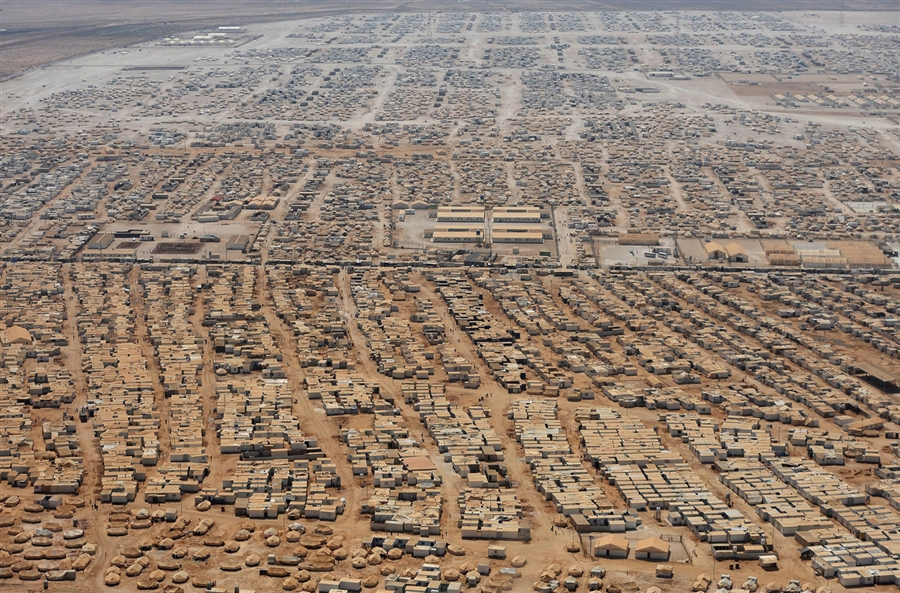Processing the 157 asylum seekers shouldn’t be outsourced to India
Kon Karapanagiotidis
Two images from the weekend have stuck in my head.
The first was of a sprawling, dusty camp, housing thousands upon thousands of Syrian refugees. After years of conflict, 2.5 million Syrians are currently refugees and another 6.5 million are displaced within the country.
Imagine almost half of Australia’s population forced to flee their homes, with millions of people stranded in the Simpson Desert in tents, with little access to water, food or health services and you might start to understand the enormity of this humanitarian crisis.
Then there was the picture by Michael Safi from The Guardian of a slight Sri Lankan woman, carrying her exhausted toddler over her shoulder, arriving on Cocos Island – one of the 157 Sri Lankan people finally allowed onshore after a month at sea in a crowded, airless Customs vessel.
She was being closely watched by a swarm of burly Australian guards or Customs officials. It looked very much like a sledge hammer being used to crack a walnut.
While it’s a relief that the Minister for Immigration and Border Protection has made the sensible, humane decision to bring the 157 Tamils to shore, it feels like a hollow victory.
It is almost beyond belief that our Government would expend so much time, energy and money on preventing a boat load of people from putting their claims for asylum, in the face of the immense refugee crisis gripping the world.
Today, these people will be taking in the full reality of their new temporary accommodation – the harsh Curtin Detention Facility in remote Western Australia – once labelled ‘primitive’ by former Immigration Minister Philip Ruddock, a micro-step up from the boat that was their home over the past month.
The motives behind the Government’s change of heart in bringing the asylum seekers onshore are hardly altruistic.
It’s a cynical move that attempts to circumvent the High Court challenge against their original plan to leave the asylum seekers at sea, in secret, as they tried to palm them off on Sri Lanka – the country most of them originally fled from – or India, the country they set sail from.
It’s also a nod to the Indian Government, which demanded our Government treat these people humanely as Scott Morrison desperately sought their help to resolve his self-created political problem.
The deal struck last week, whereby we outsource our refugee responsibilities to India on our own land, is unprecedented.
It raises a number of serious concerns that must be addressed by the Australian Government:
- If there are Indian nationals amongst the 157 as suggested, handing them over to Indian authorities for processing potentially puts Australia in breach of the international law of non-refoulement which prohibits us from sending asylum seekers back to their country of persecution.
- If India does agree to take a number of the Sri Lankan asylum seekers, what assurances has our Government sought that they won’t immediately be returned to their country of persecution or their identities disclosed to Sri Lankan authorities? India is not a signatory to the 1951 Refugee Convention, therefore isn’t legally bound to protect these asylum seekers. Such an outcome would effectively see Australia breaching the principle of non-refoulement by backdoor means.
- A 2014 Human Rights Watch report[1] cites continued marginalisation of ethnic, religious, sexual and gender minorities within India, among other human rights abuses. In December 2012, the National Human Rights Commission reported receiving more than 1600 complaints about government authorities killing people outside the legal system. How can our Government, in good conscience, return people to a place with such a questionable human rights record, without first giving them a fair hearing through our refugee determination process?
- Refugee status determination is a highly specialised area requiring specific skills. Has our Government sought to confirm that India’s consular officials are experienced or trained in this area?
- And finally, how big is the taxpayers’ bill for holding these people on a Customs vessel for a month and now detaining them in Curtin. What has this significant allocation of security, police, customs and naval resources cost us?
As this human drama unfolds, let’s not lost sight of the fact that Australia has a fair, reasonable, workable refugee determination process – it has served us well for many decades in terms of determining whether someone is a refugee or not.
This is how we should be processing the 157 men, women and children’s claims for asylum.
It is unsustainable, unworkable and expensive for the Government to continue to pursue policies that attempt to circumvent Australian and international law, just so they can claim to have ‘stopped the boats’.
What happens when the next boat arrives? And the one after that?
Because, as long as there is conflict in our world, there will be people displaced, forced to flee bombs, persecution, torture, marginalisation and fear. Just look at what’s happening in Syria, Iraq, Gaza, Ukraine.
The Government purports to be tough on boat arrivals as a way to deny people smugglers a ‘product’ and to save lives at sea.
However, the punitive nature and inhumane consequences of their policies, suggests this is purely political, with little regard for human life.
[1] Human Rights Watch, World Report 2014 – India, 21 January 2014, available at: http://www.refworld.org/docid/52dfddd8b.html [accessed 28 July 2014]




Connect with us
Need help from the ASRC? Call 03 9326 6066 or visit us: Mon-Tue-Thur-Fri 10am -5pm. Closed on Wednesdays.